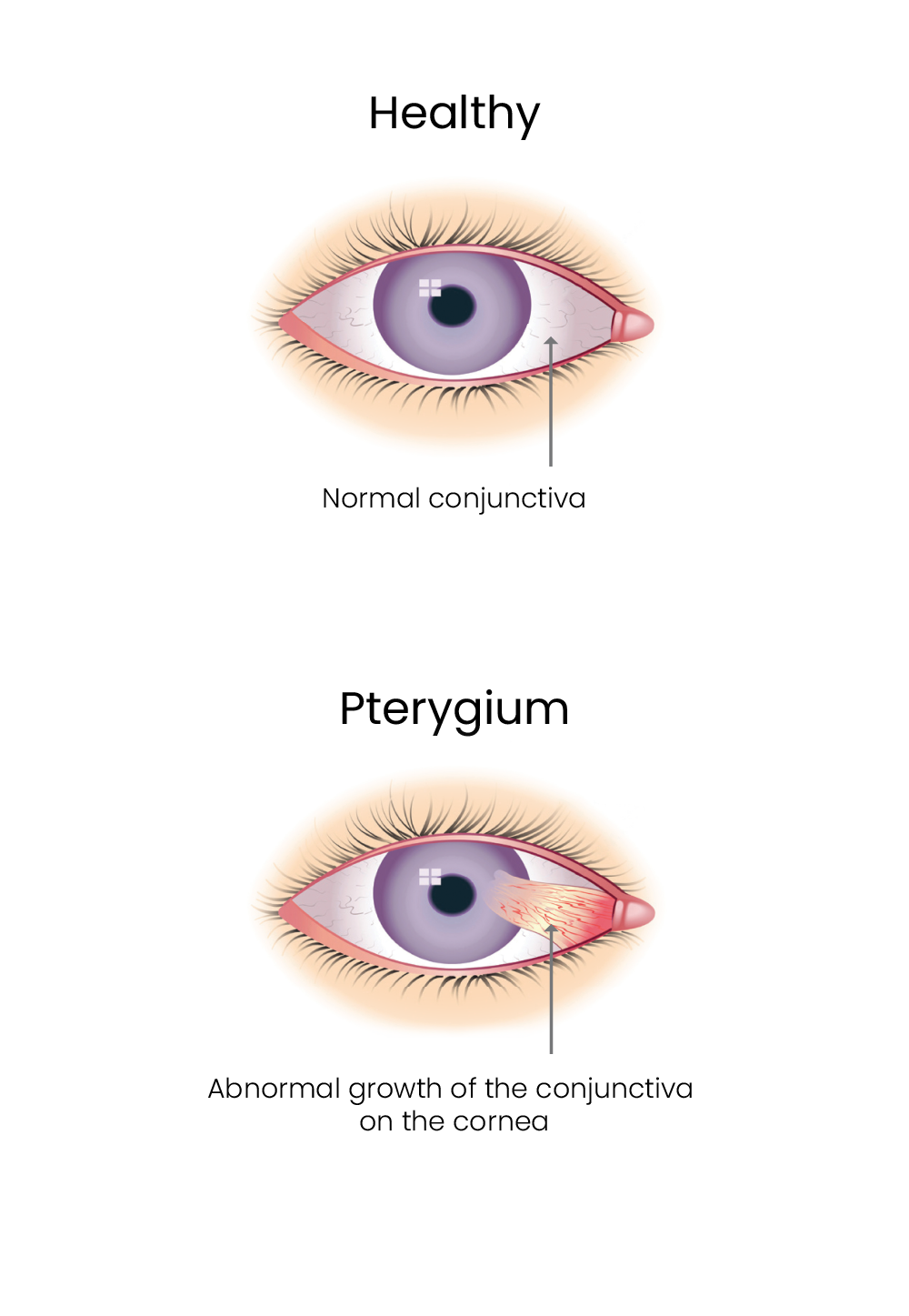What Is a Pterygium?
Pterygia (plural of pterygium) appear as a pink or red thick line or wedge of growth. Normally this extends across the white part of your eye, the sclera, from the side of your eye closest to your nose. If left untreated, they may continue across the cornea, the part of your eye where light enters and allows vision. This can lead to vision impairment. Despite the overgrowth, pterygia are not cancerous and do not become cancer.

What are symptoms of pterygia?
- Fleshy growth from the corner of the eye
- Mostly painless but can be uncomfortable
- Can be irritated in windy, sunny or dry weather
Generally, pterygia are painless, but they can be irritating and uncomfortable. Some people experience mild pain or itchiness, especially when it is windy or dry. Others may be concerned about the appearance of pterygia, or it may be uncomfortable to wear contact lenses. When the growths extend across the cornea, they can lead to blurred or distorted vision.
What causes pterygia?
How do we treat pterygia?
For many people, pterygia remain stable and don’t require intervention. There are several ways you can help reduce the impact to your pterygia.
- Eye lubricants: artificial lubricants, such as eye drops or ointments, can hydrate and moisturise the surface of your eye. This can help to reduce inflammation and irritation from the pterygia growth.
- Eye protection: sunglasses or protective eyewear can reduce your eyes UV exposure, as well as minimising contact with dust and wind. This can minimise irritation to the pterygia.
Why do we treat pterygia?
Others want them removed because they experience pterygia as uncomfortable. Given their raised, fleshy nature, it can feel like there is something in your eye.
It can also lead to more dry eye complications or infections because the pterygium reduces the ability for the eye’s surface to lubricate itself effectively.
For some people, their pterygia will continue to grow across the cornea. When this growth expands across the line of sight, this can reduce or obstruct their vision and cause blurring, shadowing and distortions.
Surgery may be an option for some people for pterygia.
- How do we perform pterygium removal surgery?
A small cut is made around the pterygium, which is then lifted from the cornea and removed.
We then perform a conjunctival autograft. This involves taking a small part of the eye surface lining (the conjunctiva) from the upper eyelid and attaching it to the area where the pterygium grew.
This method has significantly reduced the previously high rates of pterygia regrowth.
- What happens after my pterygium removal surgery?
After your pterygium removal surgery, you can expect your eye to have some bruising and increased discomfort for several weeks. The eye stitches should dissolve within about six weeks, and the white of your eye will return to normal.
During your recovery period, we strongly recommend that you wear sunglasses and protect your eyes from UV light, dust and wind.
All surgery involves risk. We will explain the pterygium removal surgery procedures to you in light of your condition. This surgery requires informed consent.
Once you have recovered from the surgery, most people regain their normal eye function.
Do you have a question or concern about your eye health? To discuss your condition with an experienced ophthalmologist or optometrist, please contact The Eye Health Centre



